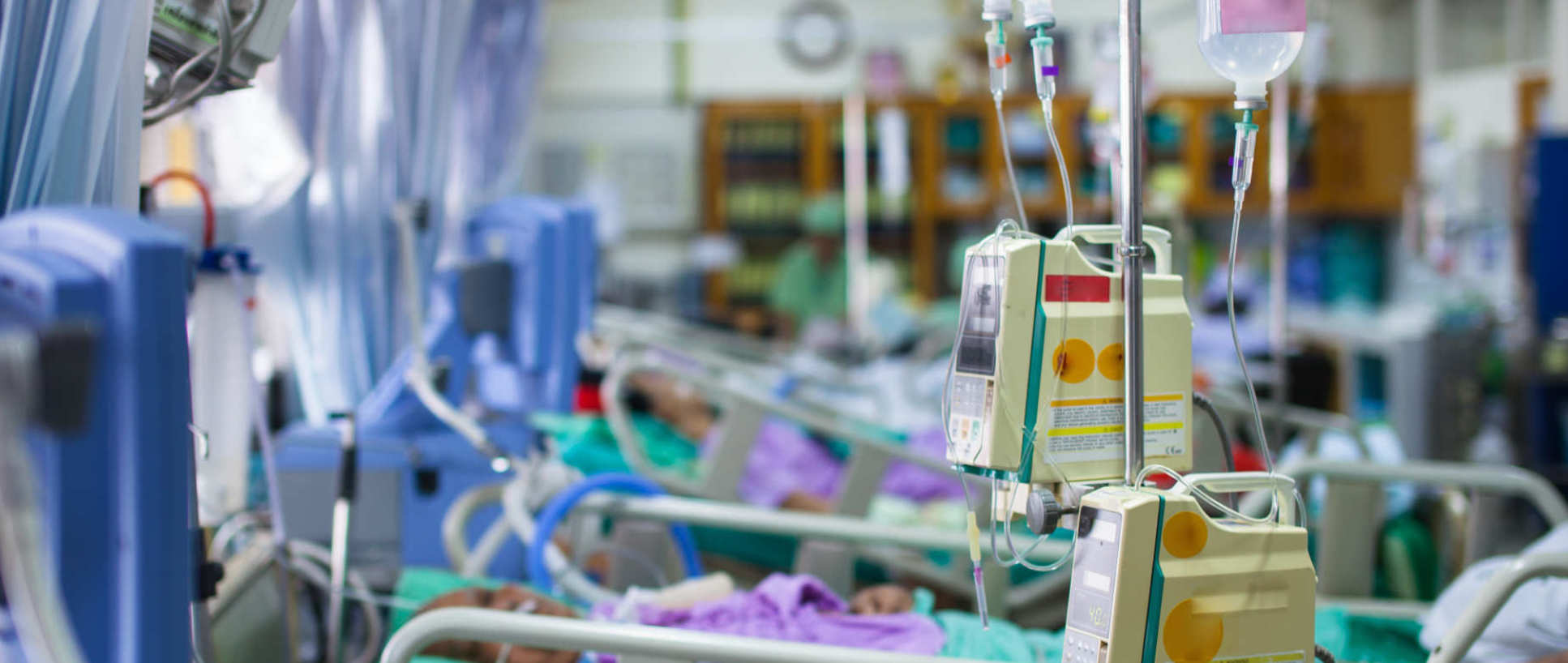BibTex format
@article{Walden:2014:10.1186/cc13812,
author = {Walden, AP and Clarke, GM and McKechnie, S and Hutton, P and Gordon, AC and Rello, J and Chiche, JD and Stueber, F and Garrard, CS and Hinds, CJ},
doi = {10.1186/cc13812},
journal = {Critical Care},
title = {Patients with community acquired pneumonia admitted to European Intensive Care Units: an epidemiological survey of the GenOSept cohort},
url = {http://dx.doi.org/10.1186/cc13812},
volume = {18},
year = {2014}
}
RIS format (EndNote, RefMan)
TY - JOUR
AB - IntroductionCommunity acquired pneumonia (CAP) is the most common infectious reason for admission to the Intensive Care Unit (ICU). The GenOSept study was designed to determine genetic influences on sepsis outcome. Phenotypic data was recorded using a robust clinical database allowing a contemporary analysis of the clinical characteristics, microbiology, outcomes and independent risk factors in patients with severe CAP admitted to ICUs across Europe.MethodsKaplan-Meier analysis was used to determine mortality rates. A Cox Proportional Hazards (PH) model was used to identify variables independently associated with 28-day and six-month mortality.ResultsData from 1166 patients admitted to 102 centres across 17 countries was extracted. Median age was 64 years, 62% were male. Mortality rate at 28 days was 17%, rising to 27% at six months. Streptococcus pneumoniae was the commonest organism isolated (28% of cases) with no organism identified in 36%. Independent risk factors associated with an increased risk of death at six months included APACHE II score (hazard ratio, HR, 1.03; confidence interval, CI, 1.01-1.05), bilateral pulmonary infiltrates (HR1.44; CI 1.11-1.87) and ventilator support (HR 3.04; CI 1.64-5.62). Haematocrit, pH and urine volume on day one were all associated with a worse outcome.ConclusionsThe mortality rate in patients with severe CAP admitted to European ICUs was 27% at six months. Streptococcus pneumoniae was the commonest organism isolated. In many cases the infecting organism was not identified. Ventilator support, the presence of diffuse pulmonary infiltrates, lower haematocrit, urine volume and pH on admission were independent predictors of a worse outcome.
AU - Walden,AP
AU - Clarke,GM
AU - McKechnie,S
AU - Hutton,P
AU - Gordon,AC
AU - Rello,J
AU - Chiche,JD
AU - Stueber,F
AU - Garrard,CS
AU - Hinds,CJ
DO - 10.1186/cc13812
PY - 2014///
TI - Patients with community acquired pneumonia admitted to European Intensive Care Units: an epidemiological survey of the GenOSept cohort
T2 - Critical Care
UR - http://dx.doi.org/10.1186/cc13812
UR - http://ccforum.com/content/18/2/R58
VL - 18
ER -
 Critical care involves the care of the sickest patients in the hospital. Critically ill patients have usually been through a significant insult to their body (such as trauma, infection, burn) and have developed organ failure and require life-support. Critical Care is the largest theme bringing together clinicians and scientists from diverse backgrounds and includes collaborative research from hospitals throughout north-west London. Investigations range from evaluating biological mechanisms of organ failure through to the development of innovative technologies which allow the short-term and long-term support and recovery of organs.
Critical care involves the care of the sickest patients in the hospital. Critically ill patients have usually been through a significant insult to their body (such as trauma, infection, burn) and have developed organ failure and require life-support. Critical Care is the largest theme bringing together clinicians and scientists from diverse backgrounds and includes collaborative research from hospitals throughout north-west London. Investigations range from evaluating biological mechanisms of organ failure through to the development of innovative technologies which allow the short-term and long-term support and recovery of organs.